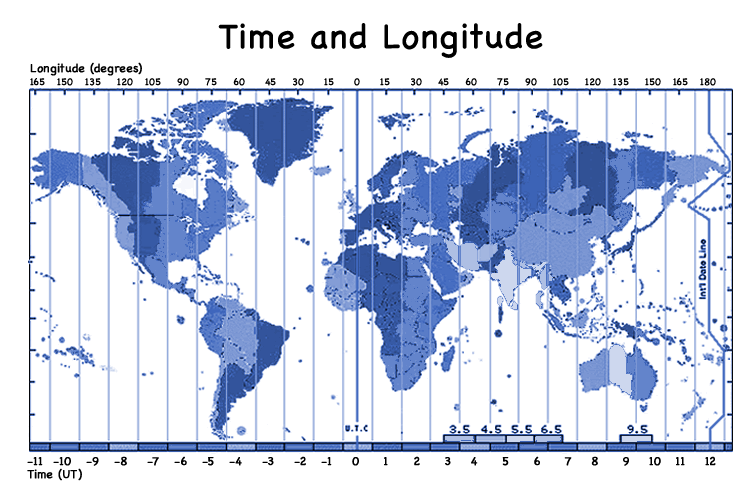The
Longitude Clues
Students will get this information for the spring equinox:
- The
time (in Universal Time) that the sun
rises at each Mystery Class site.
- The
time the sun rises at Greenwich, England (0 degrees longitude).
 |
This
map
shows the earth's 24 time zones, each of which covers
15 degrees longitude. |
Longitude
and Time Zones
In
24 hours, the earth rotates a full 360 degrees. That means
that it spins at a rate of 15 degrees longitude per hour.
(360 degrees divided by 24 hours = 15.) We've established
24 time zones, each of which covers about 15 degrees of longitude.
All clocks within the time zone will show the same time. Each
time zone is an hour earlier than the zone east of it and
an hour later than the zone west of it.
Simple
Equinox Example
Sunrise in Greenwich: 05:00 UT
Sunrise at Mystery Class X location:
10:00 UT
Mystery Class Location: Must be
5 time zones (or 75 degrees longitude) west of Greenwich.
(There are 5 hours difference between sunrise times. If a
site's sunrise is later than sunrise in Greenwich,
the site is west of there.) |